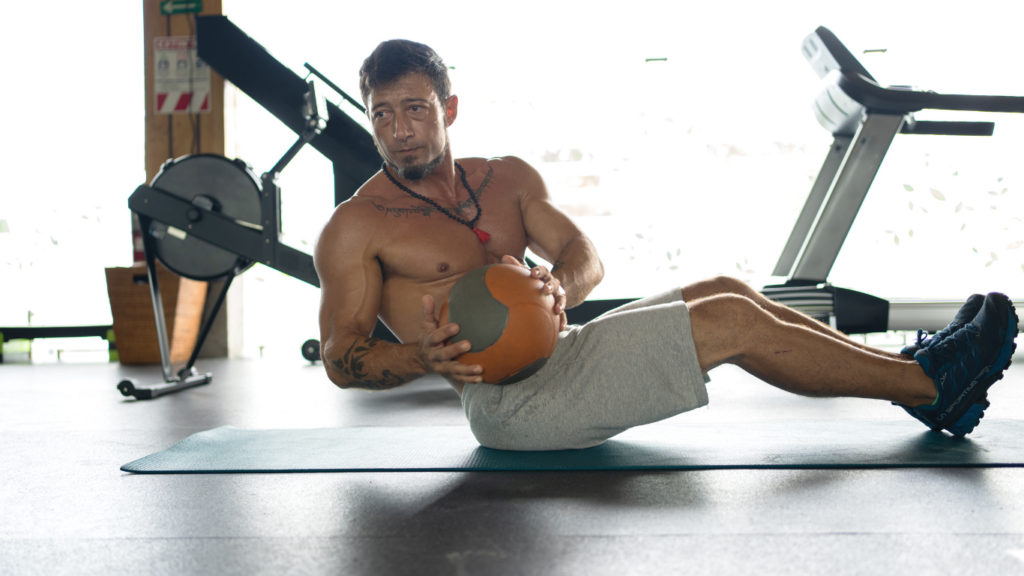Looking to enhance your stability and posture? Strengthening your core is key. In this article, I’ll guide you through some of the best core workouts that can help you achieve better stability and posture. A strong core not only supports your spine but also improves your overall balance and coordination.
Whether you’re a fitness enthusiast or just starting your wellness journey, incorporating these core exercises into your routine can make a significant difference. From planks to Russian twists, these workouts target different muscle groups within your core, helping you build strength and endurance.
Join me as we explore the top core workouts that can transform your fitness game and boost your stability and posture.
Benefits of Core Workouts for Stability and Posture
Enhancing stability and posture through core workouts offers numerous benefits that go beyond just physical appearance. These exercises play a crucial role in improving overall strength and balance.
It’s essential to understand the specific advantages that core workouts bring to stability and posture:
- Improved Balance: Strengthening the core muscles can significantly enhance my ability to maintain balance in various activities and movements. By engaging these muscles through targeted exercises, I can better control my body’s position and movements, reducing the risk of falls or injuries.
- Enhanced Posture: Engaging in regular core workouts can lead to better posture. When my core muscles are strong and properly aligned, it supports the spine and allows me to sit, stand, and move with correct alignment. This, in turn, reduces strain on the neck and back muscles, preventing slouching or hunching.
- Reduced Back Pain: A strong core can alleviate back pain by providing stability and support to the spine. Core exercises help develop the muscles around the spine, leading to better spinal alignment and decreased pressure on the back muscles. This can contribute to a more comfortable and pain-free daily life.
- Increased Strength: Core workouts not only improve stability and posture but also enhance overall strength. Strengthening the core muscles can positively impact other muscle groups, such as the arms and legs, leading to better functional movement and performance in various physical activities.
- Enhanced Athletic Performance: Core strength is essential for athletes across different sports. Improved stability and posture achieved through core workouts can enhance athletic performance by providing a solid foundation for dynamic movements, agility, and power generation.
Incorporating core exercises into my fitness routine can have significant long-term benefits for my stability, posture, and overall physical well-being. By understanding and harnessing the advantages of these workouts, I can work towards a stronger, more balanced body that supports a healthy and active lifestyle.
Effective Core Exercises to Strengthen Muscles
When it comes to strengthening your core muscles, incorporating effective exercises can have a significant impact on improving stability and posture. Let’s explore some key core workouts that target different muscle groups and help enhance your overall fitness level.
Plank Variations
Planks are an excellent way to engage multiple core muscles simultaneously, including the rectus abdominis, transverse abdominis, and obliques. By holding a plank position for short durations initially and gradually increasing the time as you build strength, you can strengthen your core muscles and improve stability.
Variations like side planks or plank with leg lifts can add diversity to your routine and target specific muscle groups effectively.
Russian Twists
Russian twists are great for engaging the obliques and improving rotational stability. To perform this exercise, sit on the floor with your knees bent, lean back slightly, and lift your feet off the ground.
Holding a weight or medicine ball with both hands, twist your torso from side to side, engaging your core muscles throughout the movement. Russian twists not only strengthen your obliques but also help enhance overall core stability and posture.
Bicycle Crunches
Bicycle crunches are a dynamic exercise that targets the rectus abdominis and obliques while also engaging the lower body. To perform bicycle crunches, lie on your back, lift your legs off the ground, and bring one knee towards your chest while extending the other leg straight out.
As you twist your torso, bring your opposite elbow towards the bent knee, mimicking a cycling motion. This exercise helps improve core strength, stability, and coordination while also promoting better posture.
Including these core exercises in your workout routine can contribute to better stability, posture, and overall fitness. By targeting different muscle groups with varied movements, you can enhance your core strength and support a healthier and more active lifestyle.
Integrating Core Workouts into Your Fitness Routine
Incorporating core workouts into your fitness routine is essential for improving stability and posture. I’ll guide you on seamlessly adding these exercises to your daily regimen to enhance your overall fitness level.
To begin, consider integrating the core workouts mentioned earlier, such as planks, Russian twists, and bicycle crunches. By including a mix of these exercises, you target various muscle groups effectively, leading to improved balance and coordination.
By including regular core workouts, you’ll experience a myriad of benefits, including enhanced balance, better posture, reduced back pain, increased strength, and improved athletic performance. These exercises help in aligning your spine correctly, reducing the likelihood of injuries, and promoting a healthy and active lifestyle.
To kickstart your routine, focus on plank variations that engage multiple core muscles and bolster stability. Additionally, incorporating Russian twists into your workout regimen enhances rotational stability and strengthens your obliques.
Lastly, don’t forget to include bicycle crunches to target both the rectus abdominis and obliques while improving coordination. By consistently integrating these core exercises into your fitness routine, you’ll boost your core strength and overall physical fitness, taking significant strides towards better stability and posture.
Tips for Maintaining Proper Form During Core Exercises
When it comes to core exercises, maintaining proper form is crucial to maximize effectiveness and prevent injuries. Here, I’ll share essential tips to help you ensure correct posture and technique during your core workout routine.
- Engage Your Core Muscles: Before starting any core exercise, focus on engaging your core muscles by drawing your navel in towards your spine. This activation helps stabilize your spine and pelvis, reducing the risk of straining your lower back.
- Keep Your Neck Aligned: It’s vital to keep your neck in alignment with your spine. Avoid straining or tucking your chin excessively. Aim to maintain a neutral neck position to prevent unnecessary tension.
- Maintain Proper Spinal Alignment: During core exercises, pay attention to your spinal alignment. Keep your back straight and avoid overarching or rounding your spine. A neutral spine position supports the engagement of your core muscles effectively.
- Breathe Correctly: Focus on breathing evenly and continuously throughout each core exercise. Avoid holding your breath as it can increase intra-abdominal pressure and lead to instability. Inhale during the easier phase of the movement and exhale during the more challenging phase.
- Control the Movement: When performing core exercises, prioritize controlled movements over speed. Rushing through reps can compromise form and reduce the effectiveness of the workout. Focus on the quality of each movement to target the intended muscle groups thoroughly.
- Adjust to Your Fitness Level: It’s essential to choose core exercises that match your fitness level. Start with variations that you can perform with proper form. As you progress, you can gradually increase the difficulty or intensity of the exercises.
- Listen to Your Body: Pay attention to how your body responds during core exercises. If you feel pain or discomfort beyond the normal “burn” of muscle engagement, stop the exercise and reassess your form. Pushing through pain can lead to injuries.
By implementing these tips into your core workout routine, you’ll not only enhance the effectiveness of your exercises but also reduce the risk of straining or injuring your muscles. Prioritize proper form to build a strong and stable core over time.


 Dawnny Armstrongster, the visionary founder of Toe Back Fitness, is a passionate advocate for health and wellness, driven by a mission to empower individuals to lead active, balanced lives. With a deep understanding of fitness and injury prevention, Armstrongster has cultivated a platform that merges expert insights with practical advice, making fitness accessible to people at all levels. Her commitment to promoting sustainable lifestyle habits and safe workout practices reflects her dedication to long-term well-being. Under her leadership, Toe Back Fitness has become a trusted resource for those seeking to enhance their physical health, choose the right gear, and build routines that align with their fitness goals.
Dawnny Armstrongster, the visionary founder of Toe Back Fitness, is a passionate advocate for health and wellness, driven by a mission to empower individuals to lead active, balanced lives. With a deep understanding of fitness and injury prevention, Armstrongster has cultivated a platform that merges expert insights with practical advice, making fitness accessible to people at all levels. Her commitment to promoting sustainable lifestyle habits and safe workout practices reflects her dedication to long-term well-being. Under her leadership, Toe Back Fitness has become a trusted resource for those seeking to enhance their physical health, choose the right gear, and build routines that align with their fitness goals.